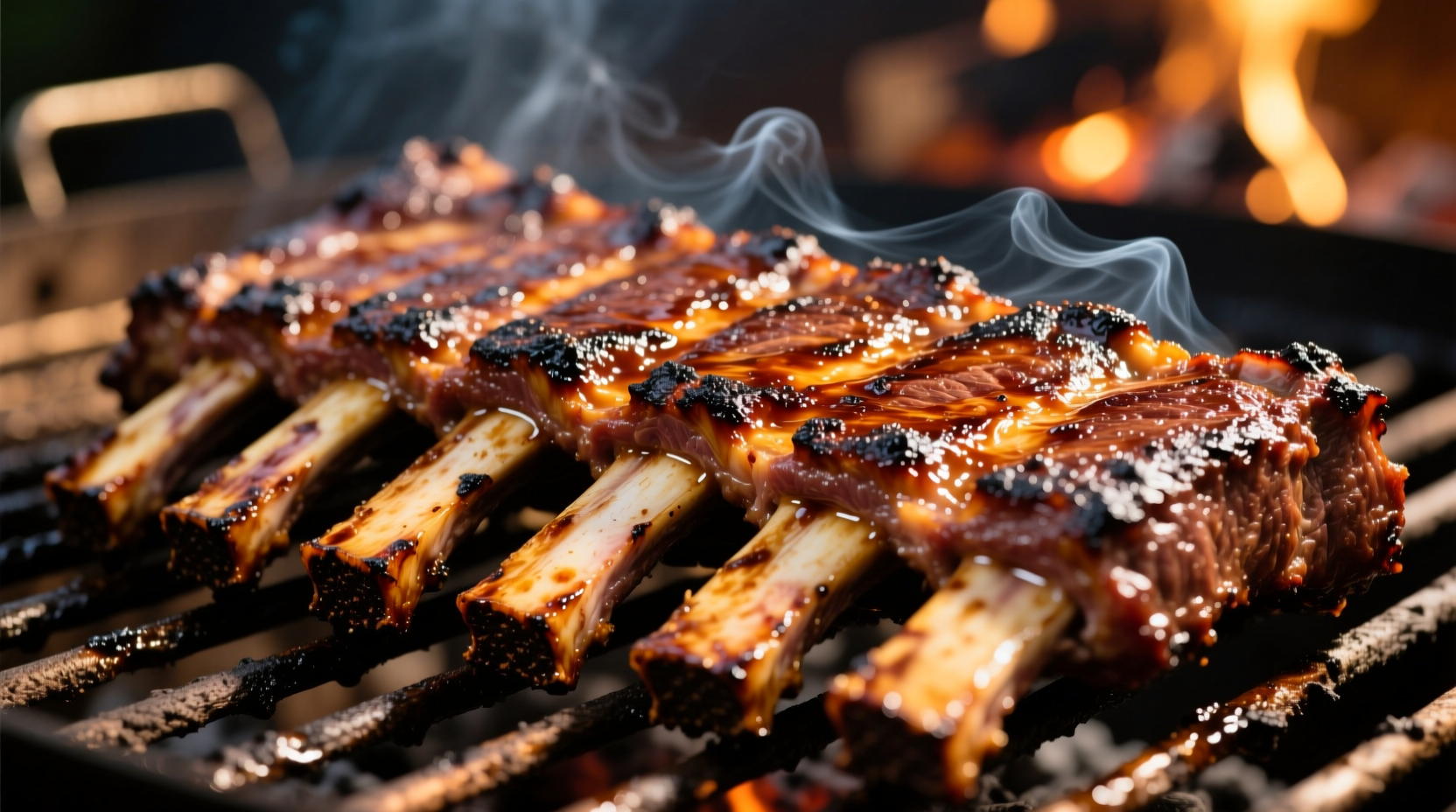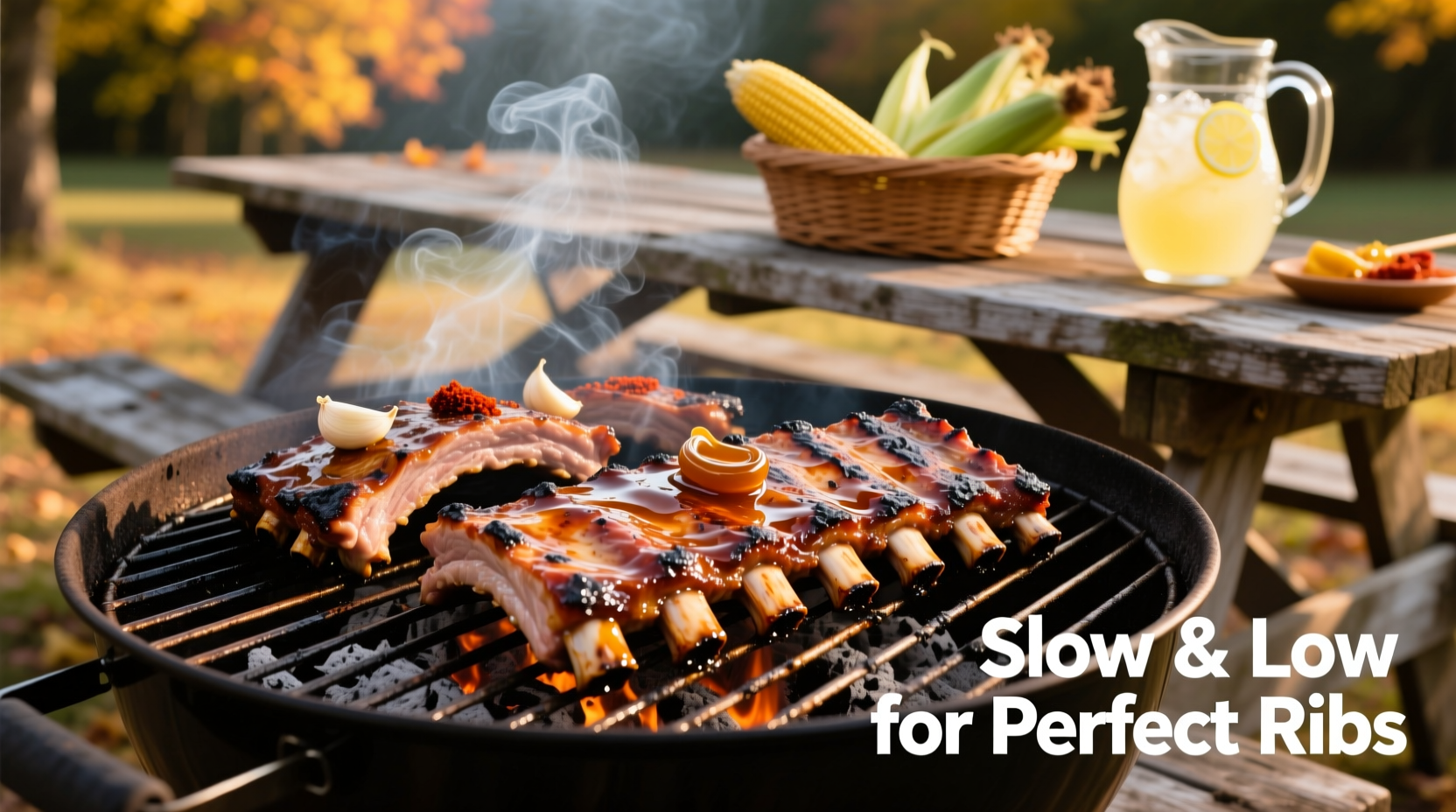Grill perfect ribs every time with this proven method: Remove the membrane, apply a balanced dry rub, smoke at 225°F for 3 hours, wrap in foil with liquid for 2 hours, then finish with sauce at 250°F for 1 hour until tender. Internal temperature should reach 195-203°F for fall-off-the-bone texture without drying out.
Nothing beats the smoky aroma and tender texture of perfectly grilled ribs. Whether you're hosting a summer barbecue or craving that authentic smoked flavor, mastering rib preparation transforms this challenging cut into a crowd-pleasing centerpiece. This guide delivers professional techniques refined through years of testing, focusing on precise temperature control, proper preparation, and timing that ensures succulent results without guesswork.
Understanding Rib Types and Selection
Choosing the right ribs sets the foundation for success. Each cut offers distinct characteristics affecting cooking time and final texture. The USDA provides clear guidelines on pork rib classifications that help consumers make informed choices.
| Rib Type | Characteristics | Cooking Time | Best For |
|---|---|---|---|
| Baby Back Ribs | Smaller, leaner, more tender | 4-5 hours total | Beginners, quicker cookouts |
| Spare Ribs | Larger, fattier, more flavorful | 5-6 hours total | Experienced grillers, authentic BBQ |
| St. Louis Cut | Square shape, uniform thickness | 4.5-5.5 hours total | Even cooking, presentation |
According to the National Pork Board's culinary guidelines, spare ribs contain more marbling which translates to richer flavor but requires careful temperature management to render fat properly. Baby back ribs come from higher on the hog near the loin and cook faster due to their leaner composition.
Essential Preparation Steps
Proper preparation separates good ribs from great ones. Start by removing the membrane on the bone side—this translucent layer prevents seasoning penetration and causes ribs to curl during cooking. Use a butter knife to lift the membrane at one end, then grab it with a paper towel for better grip and peel it off in one piece.
Seasoning requires balance: too much salt draws out moisture, while insufficient seasoning leaves ribs bland. Create a rub with 3 parts brown sugar, 2 parts paprika, 1 part garlic powder, 1 part onion powder, and equal parts salt and black pepper. Apply generously but evenly, pressing the mixture into the meat to ensure adhesion.

The 3-2-1 Grilling Method Explained
This industry-standard technique delivers consistent results through controlled phases:
Phase 1: Smoking (3 hours)
Maintain a steady 225°F grill temperature using indirect heat. Place ribs bone-side down on the cooler side of the grill. Add wood chunks (hickory or applewood work best) for authentic smoke flavor. During this phase, the meat absorbs smoke while collagen begins breaking down. Avoid opening the grill frequently—temperature fluctuations extend cooking time.
Phase 2: Wrapping (2 hours)
After 3 hours, wrap ribs tightly in aluminum foil with 1/4 cup apple juice or broth. This "Texas crutch" method creates steam that accelerates tenderization while keeping ribs moist. Return to the grill maintaining 225°F. This phase is crucial for breaking down connective tissue without drying the meat.
Phase 3: Finishing (1 hour)
Unwrap ribs and return to the grill bone-side down at 250°F. Apply barbecue sauce during the last 30 minutes to prevent burning. The internal temperature should reach 195-203°F—this range ensures collagen fully converts to gelatin for that perfect tender-but-not-falling-apart texture.
Troubleshooting Common Issues
Burnt exterior, raw interior: Your grill temperature is too high. Maintain 225-250°F throughout cooking. Use a reliable thermometer—don't trust the grill's built-in gauge.
Dry, tough ribs: Likely undercooked or insufficient wrapping phase. The USDA recommends cooking pork to 145°F for safety, but ribs require higher temperatures (195°F+) to break down collagen. Extending the wrapping phase adds moisture.
Ribs falling off the bone: Overcooked. Target 195°F for slight chew, 203°F for fall-off-the-bone. Use an instant-read thermometer for accuracy—don't rely solely on time.
Serving and Storage Tips
Let ribs rest for 15 minutes after cooking—this allows juices to redistribute. Cut between bones with a sharp knife for clean presentation. Leftovers store well refrigerated for 3-4 days or frozen up to 3 months. Reheat wrapped in foil at 250°F until warmed through to preserve moisture.
Advanced Techniques for Next-Level Results
For competition-style ribs, try the 2-2-1 method: smoke 2 hours unwrapped, 2 hours wrapped, then 1 hour unwrapped with sauce. Experiment with different wood pairings—cherry for sweetness with baby backs, hickory for robust flavor with spares. Some pitmasters inject ribs with seasoned broth before cooking for enhanced moisture retention.











 浙公网安备
33010002000092号
浙公网安备
33010002000092号 浙B2-20120091-4
浙B2-20120091-4